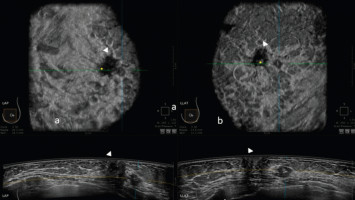
A new diagnostic tool for breast cancer that combines two ultrasounds has been developed.
A POSTECH research team led by Professor Chulhong Kim (belonging to the Department of Convergence IT Engineering, Electrical Engineering, and Mechanical Engineering), and Misra Sampa (Department of Convergence IT Engineering) has developed a breast cancer detecting deep learning model that combines greyscale B-mode and strain elastography (SE) ultrasound imaging.
Ultrasound imaging is not only considerably safer and less costly than other diagnostic methods – such as mammography, X-ray, or MRIs – but also enables in-depth observation of the tissues.
Among them, the greyscale B-mode ultrasound that clearly shows the lesion structure and the strain elastography ultrasound that shows the tumour density are widely used for breast cancer classification.
To this, Professor Kim’s team combined the two to maximise their strengths.
The study was conducted on 85 breast cancer patients including 42 with benign lesions and 43 with malignancies, all confirmed by biopsy.
Two deep neural network models, AlexNet and ResNet, were separately trained on combined 205 greyscale and SE images from 67 patients with benign and malignant lesions.
The two deep learning models were then configured to work as an ensemble, and tested on a dataset of 56 images from the remaining 18 patients.
This deep learning ensemble model identified diverse features present in the two different ultrasound images, and successfully detected the presence of malignant tumors.
The experimental results demonstrate that the accuracy of the deep learning ensemble model is 90%, which is higher than the individual models (84% each), and the model trained using greyscale B-mode or SE imaging (greyscale 77%, SE 85%) alone.
In particular, while the individual model misclassified five patients, whereas the ensemble model only missed two.
Until now, ultrasound imaging was used in breast cancer classification but suffered from a shortage of radiologists and poor imaging quality.
The deep learning model developed in this study enhances the accuracy of breast cancer diagnosis.
“Using this deep learning model can achieve superior detection efficiency since it can accurately classify breast cancers in ultrasound images,” explained Professor Chulhong Kim who led the study, published in IEEE Transactions on Ultrasonics Ferroelectrics and Frequency Control.
We are an independent charity and are not backed by a large company or society. We raise every penny ourselves to improve the standards of cancer care through education. You can help us continue our work to address inequalities in cancer care by making a donation.
Any donation, however small, contributes directly towards the costs of creating and sharing free oncology education.
Together we can get better outcomes for patients by tackling global inequalities in access to the results of cancer research.
Thank you for your support.